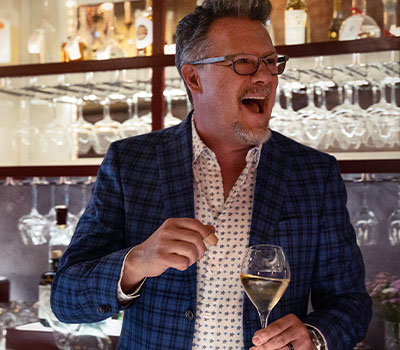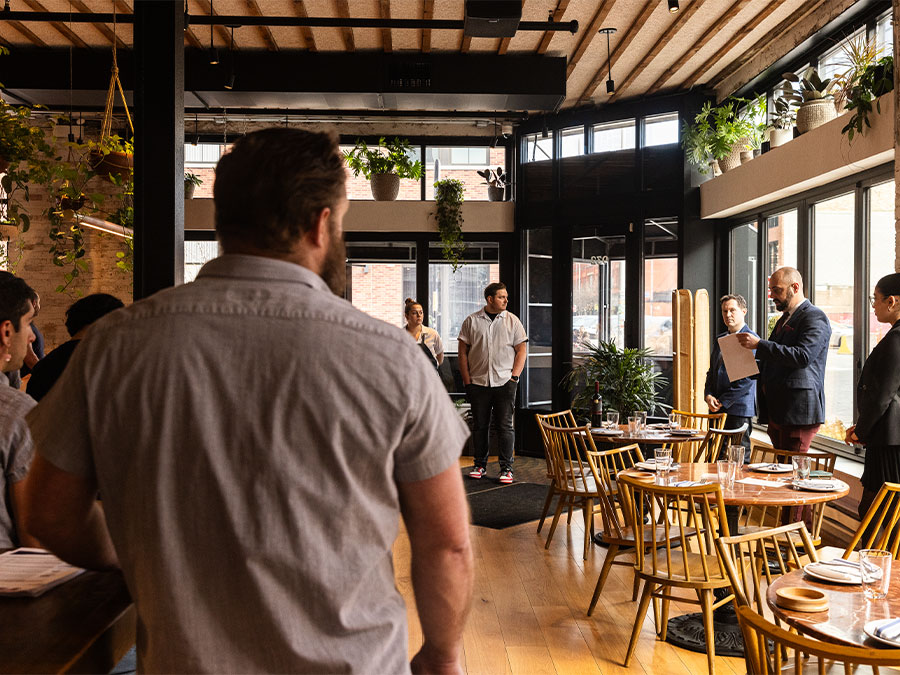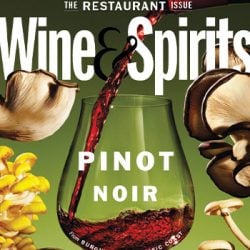“One of my biggest loves is for Portuguese whites,” Nicolas Berggren told us, citing the most exciting bottle he opened last year at The Purple Pig in Chicago. “You’re talking about value, and you’re talking about the transparency of low-intervention, regenerative wine-making. The one that comes to mind is arinto, mostly, the Entre Pedras Efusivo from Pico in the Azores. It’s a small-production wine. No one’s ever heard of the grape—especially someone accustomed to drinking white wines from France, Burgundy…but when they taste it, they know it overdelivers.”
Berggren’s enthusiasm for Portuguese wines was shared across a range of restaurateurs we surveyed, from Frank Kinyon at Philadelphia’s a.kitchen+bar (“Portugal has really emerged this year”), to Chris Belk at Bern’s Steakhouse in Tampa, FL, who reports that the country’s reds are gaining ground on his list.
When asked what new category gained the most traction on their lists last year, more sommeliers mentioned Portugal than any other country, with France and Spain close behind.
“We did expand a lot on Portuguese wine, both white and red,” reports Hannah Williams, of Blue Hill at Stone Barns in Tarrytown, NY. “And the value is there. So many people come to Blue Hill once in their lives and want something interesting. We have the Luis Pato 2021 Vinha Formal Bical on by the glass right now, and I know everyone will like it. It feels almost like a chenin, but it’s its own thing.”
Kester Masias at Harlo in Las Vegas mentioned Bairrada, including several bottlings from the late 1980s made by Caves São João. “They deliver incredible amounts of drinking pleasure and everyone who’s had them has always been shocked because A) they have hardly ever seen wines of that age on a list in this area, and B) no one ever thought they’d come from Portugal, right?”
Others are focused on alvarinhos or whites from the Douro. At New York City’s Crown Shy, Kristen Goceljak developed a house wine for the SAGA Hospitality Group, working with Muxagat and Luis Seabra. “We tasted a bunch of tank and barrel samples and came up with a final blend. The chef, who’s a graffiti artist in a past life, actually did the label. We finally got the wine and it’s at the restaurants by the glass. It’s a white wine—mostly rabigato; if you’re familiar with the wines from Muxagat, it’s similar to what they do. That’s one of the wineries Luis Seabra consults at.”
While a number of sommeliers at white-tablecloth restaurants called out the wines of Luis Seabra, Aldo Sohm at Le Bernardin spoke of a Douro wine from the creative cellar Seabra once ran for Dirk Niepoort. “Not everybody can drink Burgundy,” Sohm says, “so you recommend and show them some different wines. Recently, I gave two hardcore collectors the Coche from Niepoort, and I gave it to them blind. And for them, they wouldn’t even know how to spell Portugal based on wine. And they were blown away. Of course, both bought it right after. It’s phenomenal wine. I mean, I have to laugh about it in comparison to Coche-Dury, right? But there’s a zero missing.”


“I love being able to tell people that the Declaration of Independence was toasted with Madeira, and they don’t even know what it is. You’ve got them right there.” —Timothy Gardner, Lula Drake Wine Parlour, Columbia, SC
Several wine directors also reported robust sales of fortified wines, particularly Madeira. Fortifieds are what Nancy’s Hustle is known for, according to Justin Vann. But Madeira is strengthening in other restaurants. Timothy Gardner at Lula Drake Wine Parlour in Columbia, South Carolina, has been slowly building his list of vintage Madeira, back to 1901. “People come in and spend a lot of money because they’ve worked their way up through [Rare Wine’s] Historic Series. You can pour some of those for twelve dollars a glass and they’re incredible. They’re like the gateway drug to the vintage Madeiras.”
When Randall Restiano took over the list at Gramercy Tavern in NYC, one of the first things he did was deepen the selection of Porto, Madeira and Sherry. “The GM said, ‘Why are we adding all of these things?’ Restiano recalls. “And then, watching them sell, we both looked at each other and said, ‘Oh, wow. I guess that worked.’ Maybe it plays into the whole tradition of Gramercy Tavern. Like you should end your meal with a glass of Port or Madeira. Maybe that’s something that doesn’t happen in a lot of the newer-style restaurants. This is having to reorder Madeira and Porto more than once in the last three months, which is shocking because in my whole career you order it once for the year and that’s it.”


Pre Shift: General Manager Rocky Kitzman reads the pre-shift notes with Floor Manager Jackie Soto standing to his left and Wine Director Jake Bernie to his right.
The next essay in our sommelier interview series, The Newest Spain, details the rise in popularity of lesser-known Spanish wines.
Joshua Greene is the editor and publisher of Wine & Spirits magazine.
This story appears in the print issue of Spring 2024.
Like what you read? Subscribe today.


















